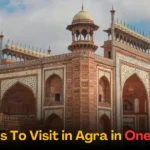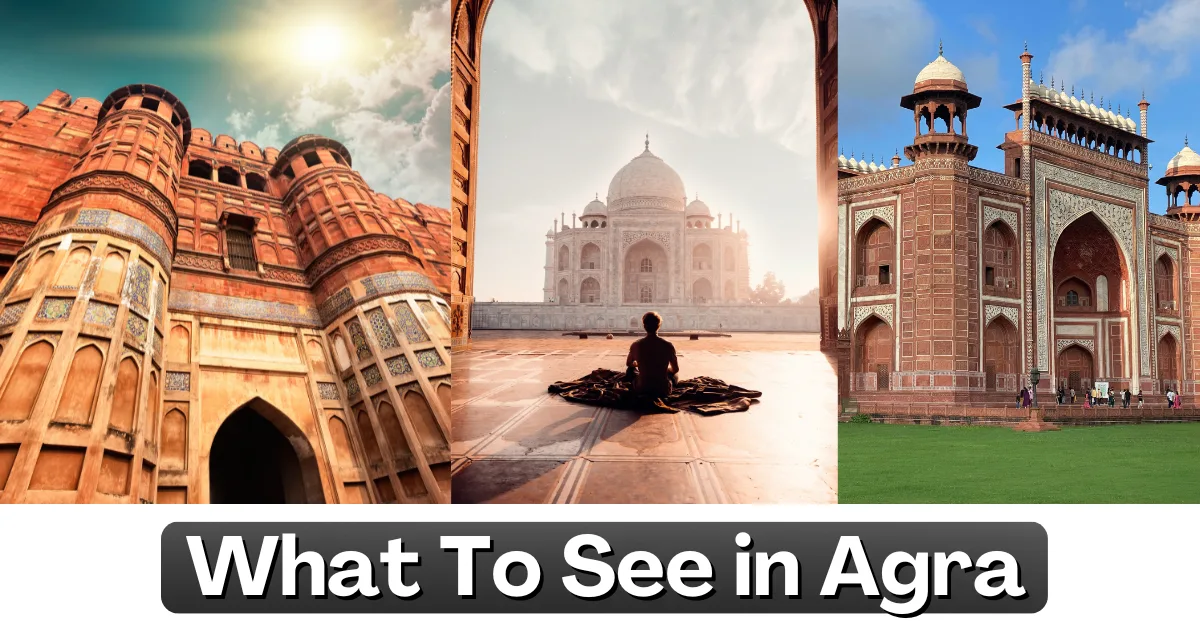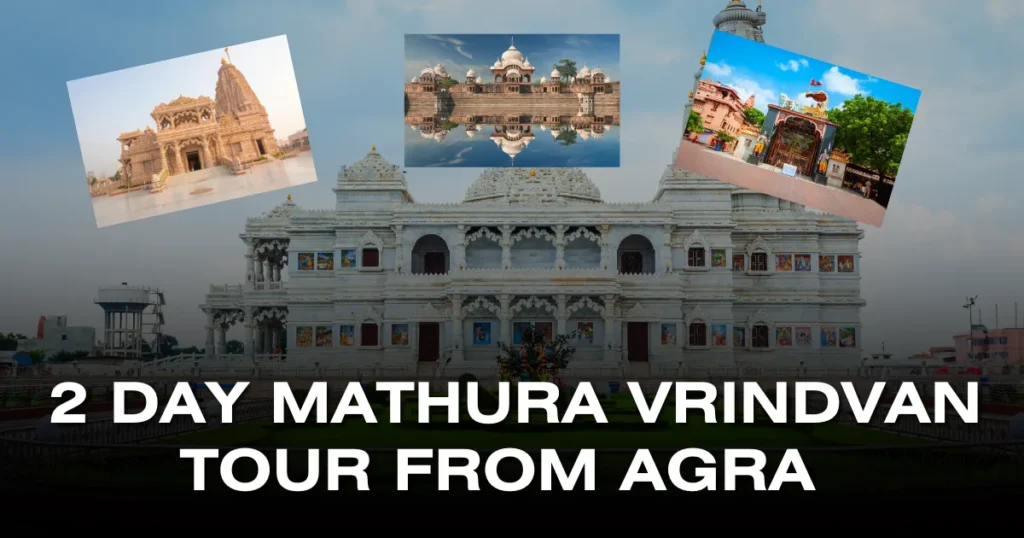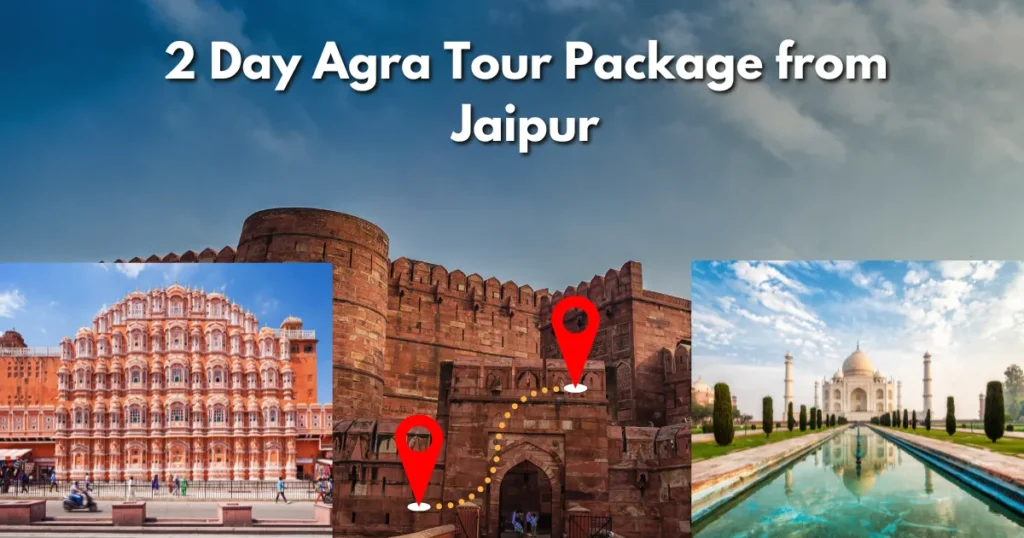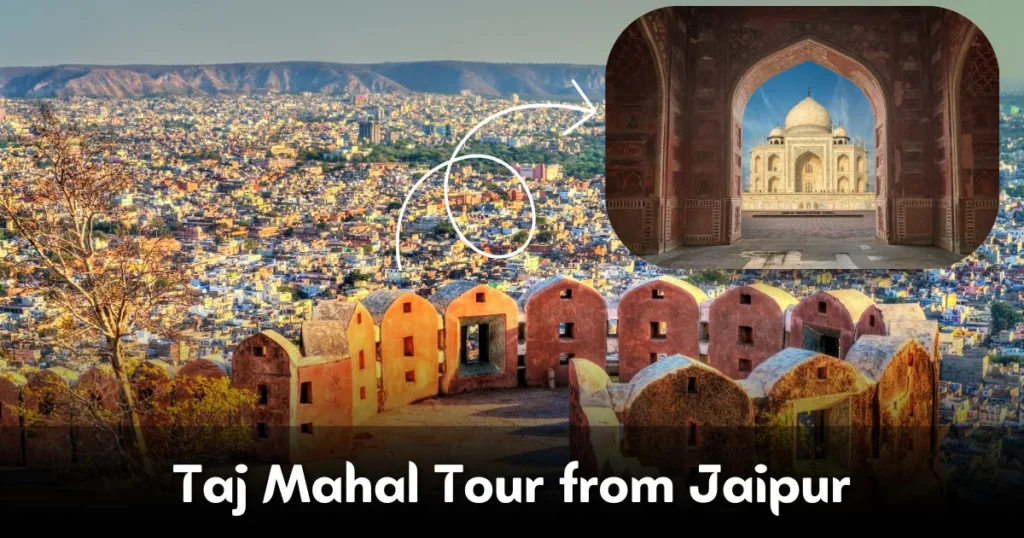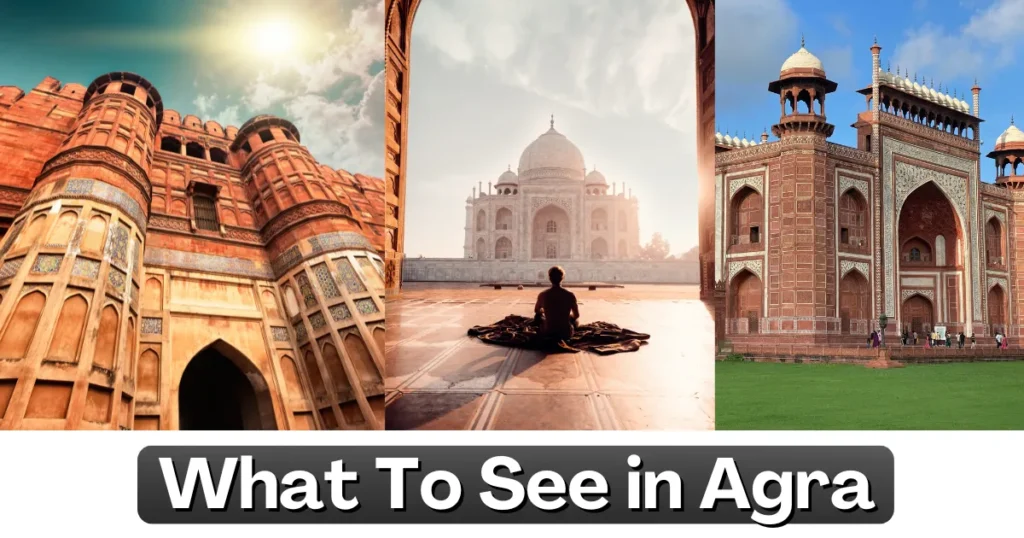There are two ways to see a city—one in which you carry a list of monuments in your hand, running and taking photographs as you go, and another in which you pause, read the marks of time engraved on the walls, and listen to the heartbeats hidden in the lanes and alleys. If someone asks you What To See In Agra, the answer is not merely “see the Taj Mahal”; rather, the answer is that you must surrender yourself to that city which has witnessed the deepest breaths of the Mughal empire, which has embraced love and power, craftsmanship and faith, all in its lap.
Agra Tourism invites you in this very spirit—that you come not as mere travellers but as seekers; because here every stone, every gate, every garden is both a question and an answer.
Table of Contents
ToggleBeyond Marble – Why Agra Is a Living Chronicle?
People often say—Agra? There is only the Taj Mahal. But can the history of a city be confined within a single dome? The truth is that the famous monuments to visit in Agra are not limited only to the glow of white marble, but extend to the roar of that red fort where the destinies of empires were written, to that abandoned capital now called Fatehpur Sikri, and to those gardens where moonlit nights descended as adornment.
So if you are wondering What To See In Agra, remember that here the object to see is not merely buildings, but the dialogue of ages.
Taj Mahal – Where Love Becomes Eternal Stone
Every traveller who comes to see the Taj Mahal is at first overwhelmed by its symmetry and splendour; but if you stop, enter silence, and see its reflection in the river, you will feel that this is not merely Shah Jahan’s, but the monument of the entire human imagination. How many artisans’ hands, how many poets’ lines, how many echoes of love stories are imprisoned in this marble?
Among the top tourist attractions in Agra city, it surely stands first, yet it is not merely a building, but that question which every age asks—can love truly be more eternal than death?
Agra Fort – The Red Heart of Empire
The marble of the Taj is tender, but Agra Fort is that tale forged in hard red stone where the pulse of empire once beat. Walking through its courtyards, you may hear the cries of soldiers, the echoes of emperors, and the whispers of political intrigues.
Today this monument is counted among the best places to see in Agra for travelers, but is it only walls? No—it is the memory of power, and the reminder of that eternal truth that however permanent empires may appear, the river of time carries them away.
Fatehpur Sikri – A Silent Dream of Akbar
The capital that Emperor Akbar envisioned as the centre of his dreams was Fatehpur Sikri. Today it is deserted, yet its silence itself is its speech. The halls of audience, the mosques, and the grand Buland Darwaza all together declare—no matter how mighty man may be, nature and time are greater still.
Therefore, if you are asking What To See In Agra, then know this city shows you not only love and empire, but also unfinished dreams.
Itmad-ud-Daulah – A Delicate Jewel
People call it the Baby Taj, but it is a subtle version of the Taj—a delicacy woven in marble. This tomb reminds us that architecture lives not only in grandeur but also in fragility.
For travellers, it is among those famous monuments to visit in Agra which are often overlooked, yet it invites the onlooker to descend deeper.
Mehtab Bagh – The Garden of Reflections
Standing across the Yamuna, when you see in the moonlit night the reflection of the Taj in the water, then you understand why it is called Mehtab Bagh. This place reminds us that sometimes beauty is more truthfully experienced not directly, but through reflection.
Visiting Hours of Famous Monuments in Agra
| Monument / Place | Opening Time | Closing Time | Closed On / Special Notes |
|---|---|---|---|
| Taj Mahal | 6:00 AM | 6:30 PM | Closed on Fridays; Night viewing available on full moon nights (8:30 PM – 12:30 AM, 5 nights per month including full moon). |
| Agra Fort | 6:00 AM | 6:00 PM | Open all days of the week. |
| Fatehpur Sikri | 6:00 AM | 6:00 PM | Open all days of the week. |
| Itmad-ud-Daulah (Baby Taj) | 6:00 AM | 6:00 PM | Open all days of the week. |
| Mehtab Bagh | Sunrise | Sunset | Open all days of the week; best time to visit is evening for Taj Mahal reflections. |
Agra Beyond Stone and Mortar
And then Agra is not only a city of stones. Its lanes even today hold the sweetness of petha, the embroidery of zardozi, and the calls of bazaars. If in the top tourist attractions in Agra city you count only monuments, the experience will remain incomplete; the true experience is meeting those people who even today keep these traditions alive.
A Final Reflection
So if someone asks you What To See In Agra, do not say that you should just see the Taj Mahal. Say—see that city which has preserved history in stones and culture in its lanes. See that city which teaches you that love, power, dreams, and tradition—all are but chapters of the same eternal story.
Agra Tourism gives you this very invitation—come not to see this city, but to be seen by this city.
FAQs of the What To See In Agra
Q1. What are the famous monuments to visit in Agra?
The Taj Mahal, Agra Fort, Fatehpur Sikri, Itmad-ud-Daulah, and Mehtab Bagh are among the most famous monuments.
Q2. Which are the top tourist attractions in Agra city apart from the Taj Mahal?
Agra Fort, Fatehpur Sikri, Mehtab Bagh, and local markets add depth to the city’s cultural charm.
Q3. What are the best places to see in Agra for travelers looking beyond the obvious?
Itmad-ud-Daulah, Mughal gardens, bazaars, and cultural experiences like crafts and cuisine.
Q4. How long should a traveler stay in Agra to experience its monuments properly?
Two days are ideal for covering the Taj Mahal, Agra Fort, and an excursion to Fatehpur Sikri.
Q5. Why does Agra remain unique for travelers even today?
Because it offers not just monuments but a living blend of history, culture, and tradition that still breathes in its streets.




